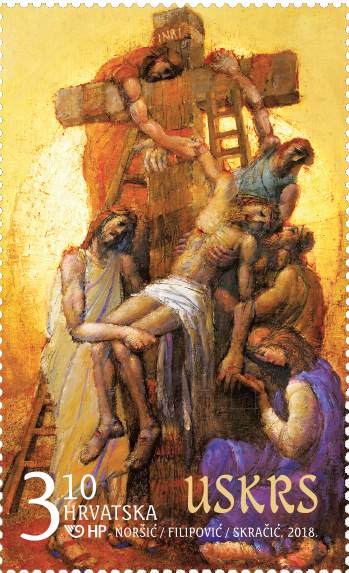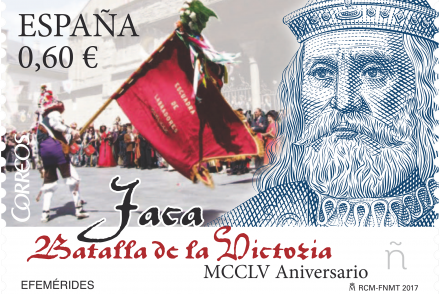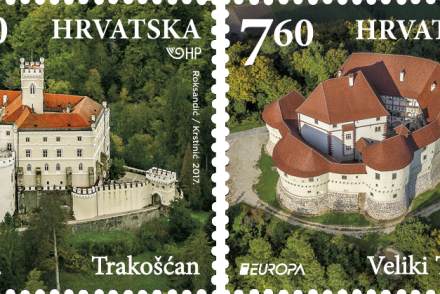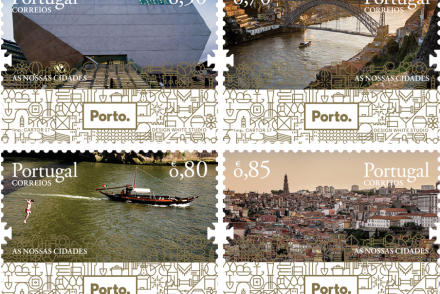Easter 2018
Croatia – hristmas and Easter are associated with light. The God is born as a “young sun“ on Christmas collecting within Himself the ancient signs and meanings of earth renewal. He arrives from the light of high spheres to become the light of the world. On Easter, that light that has plunged into the earth’s darkness, returns from death to shine along the path of its eternal shine.
In the Church of Immaculate Conception of Mary located in Dubrave by Br?ko, Mile Skra?i?, a painter from Split, created what is possibly his best work, fourteen stations on the Way of the Cross. The background on all of them, including this “Descent from the Cross” – used by Croatian Post to commemorate this year’s Easter – is the golden glow of a large sun. It, despite the restless painter’s matter and strokes, signifies the abstract, endless space (more of an endless time span than space) of pre-renaissance paintings. With its open eye (“you cannot hide anything from”), as a huge lens, it watches and remembers all affairs that have been unfolding and repeating in front of our eyes until today.
Mile Skra?i? (1933 – 2013) graduated from the School of Applied Arts and Design and the Faculty of Education at the University of Split, followed by the Academy of Fine Arts in Zagreb under the guidance of Professor Šime Peri?. Inspired by Art Informel, he was interested in matter as the content of the painting, then the contact between matter and technological markers – the relationship between nature and civilisation. It all directed him to the fundamental drama stage, the human body. His cycle entitled “Wounded Landscapes“ was actually a number of body landscapes. The body then searched for its strong and permanent symbolic moulds, that is, it poured itself into the templates of holy beings and holy sceneries. Skra?i? realised several exceptional works with the sacral theme. With a modern idiom, he undeniably executed traditional figurative tasks, shaped sacral scenes that are impressive and legible like the works of old masters but that also exude their own reduction of details, cumulative view and a free, even dramatic handwriting. Mile Skra?i? particularly identifies with the old masters with his rich and expressive scene articulation. Skra?i? never refrained from the dramatic art of painting. At its disposal, his “holy theatre“ has an objection-free anatomy, boundless repertoire of scenic movements, careful direction, imaginative composition changes. His strong but lyrical colourism is fittingly reflected on the golden background.
All of that can be seen from this “Descent from the Cross“. Five characters are taking down Jesus’ rigid body. We can turn to the Evangelists and assume who the three depicted characters are: everyone talks about Joseph of Arimathea, and John adds Nicodemus. A female character is grabbing Jesus’ powerless dead hand at the base of the cross. With her movements and stance, she seems more likely to be Mary Magdalene than Jesus’ mother. Skilful pyramidal composition of the cross, intertwined bodies and two ladders create a painful unit, a painful agony that would be difficult to bear if not for the sun in the background dispersing its promise of light.
Željka ?orak, Ph.D., Scientific Advisor
Emeritus at the Institute of Art History




